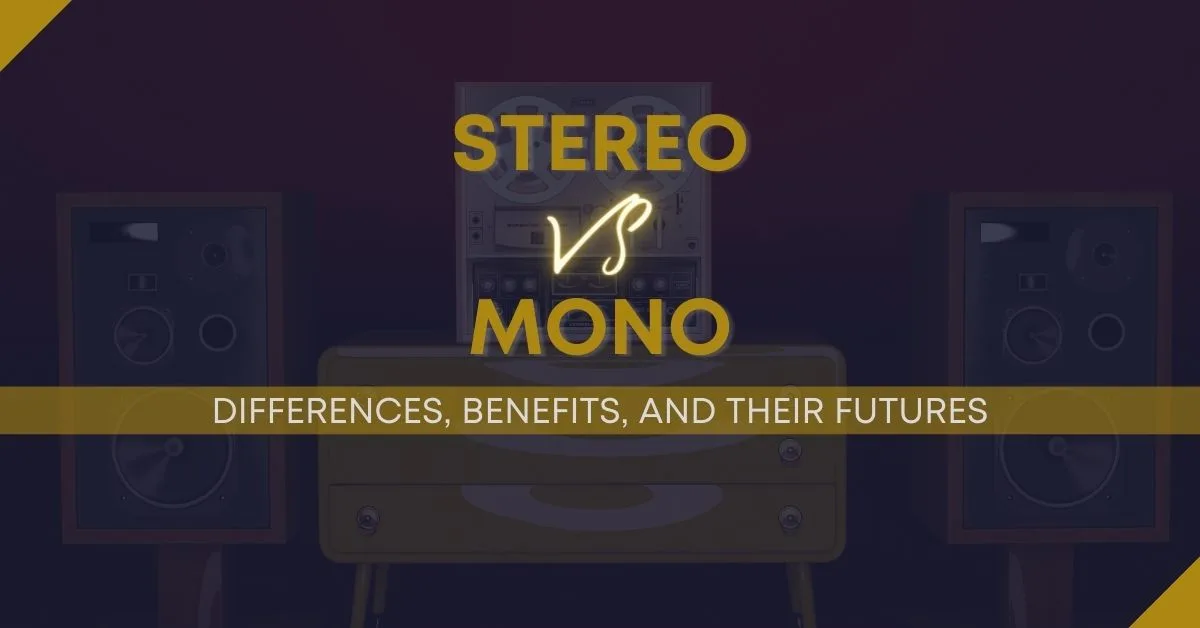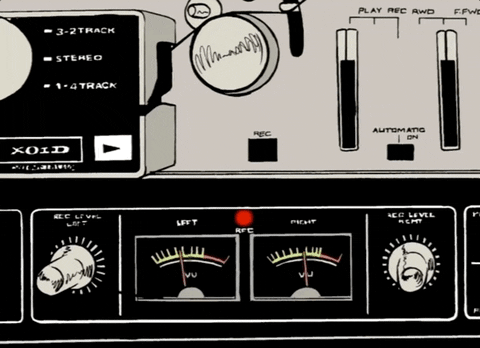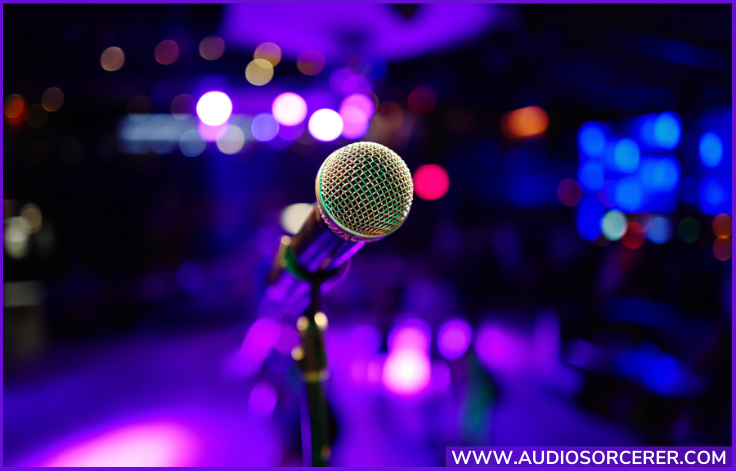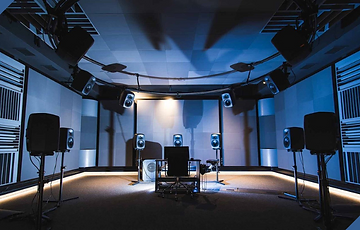
You are jamming out to a song when the vocals suddenly trail off to the left and then the right speaker. What the heck was that? Even though the vocals appear to be moving, other sounds like the drums stay in the center, creating an ultra-dynamic listening experience. So, what’s happening here? Well, the audio engineer of a song like that uses mono and stereo audio channels - two different recording and mixing methods that alter the dimensions of sound.
Mono and stereo both have their pros and cons. Typically a song will feature both kinds of audio signals to stamp the track with a full and captivating sound. For musicians or engineers who want the ability to record and mix multidimensional sounds, mastering these audio outputs is a must! If the terms mono and stereo are already causing you anxiety, we have good news for you. The difference between the two is an easy concept to grasp. After reading this article, you’ll be the mono-stereo master!
So, let’s get into everything you need to know about about stereo vs mono signals.

When looking at stereo vs mono, mono audio is a single audio channel that plays through a single speaker. Mono means one, after all. Recording in mono only requires one microphone in a fixed location. When the audio track plays, the listener will only hear the sound from that one point of perspective. In that regard, mono audio is a limited version of a sound that comes across as one-dimensional and flat. Well, technically, mono audio is two-dimensional since it can only show the height and depth of a sound.
Let’s take your phone’s ear speaker as an example. When you’re on the call, if the person talking on the other end takes a few steps to the left, right, or back, you’ll notice the voice is getting farther away but you have no way of telling which way it went. That’s two-dimensional audio for you!
Does that mean multiple speakers can’t play mono audio? I’m so glad you asked – and great question. A mono recording played back on multiple speakers is called duo-mono – that’s a lot of monos. When this happens, the single audio channel is duplicated in each speaker.
So, when you hear someone say Mono audio, think of one microphone recording from one position that produces a single audio channel. Mono = One.

Stereo sound creates a much more dynamic listening experience compared to mono audio. Instead of just one location perspective, stereo audio uses two audio channels that play through two speakers. Two channels allow you to identify sounds coming from in front of you and to the left and the right (width). Suddenly, listening to a song will feel like you’re in a room where multiple instruments and singers are positioned in different locations – that’s pretty sweet, huh?
Remember that song you were listening to that featured vocals that trailed off to the left and then the right? That’s stereo sound at its finest. To achieve that three-dimensional effect, two speakers that are a certain distance apart are required along with some audio adjusting. Some cell phones have dual speakers, but they’re often too close together to create the space needed for the width of stereo audio to come across. Headphones are the best devices to experience and get sucked into a three-dimensional track.
Let’s not get confused between surround sound and stereo sound. For surround sound to work, you’ll need four to five speakers that play more than two audio channels. In contrast, stereo sound is limited to two audio channels and isn't quite as immersive.
So, remember Mono = One and Stereo = Two. Now, don’t forget!
Okay, so we’ve clarified the difference between stereo vs mono audio. But how do the recording processes differ? Another great question. In general, mono recording will be more straightforward than stereo recording because you don’t need as much equipment or knowledge of spatial measurements.

Recording in mono only requires one microphone. If you are looking for an affordable recording setup, then mono’s minimal requirements are going to make your day! Though mic placement is important, it is less so when recording in mono because you don't have to deal with the potential phase issues that occur in stereo recording.
When recording in mono, finding the sound you want will be a much simpler process. When the recorded audio comes onto your computer, it’ll show up as a single audio channel that is a breeze to adjust.
So, although mono audio has its limitations in certain scenarios, the minimal equipment and easy-to-use setup make it a great option for beginners who are just getting started.

To achieve that dynamic sound, recording in stereo requires at least two microphones and two speakers. As you have probably put together, stereo recording equipment will be twice as expensive as mono recording. The process will also be twice as complicated.
You’ll now be responsible for positioning multiple microphones that have to be just the right distance apart to achieve the right sound. That can be a bit overwhelming for a newbie who is just getting into recording. Not to mention, there is more room for error in the mixing process.
However, if you can properly set up your equipment and confidently work with two audio channels, stereo recording will open up a whole new world of sound for you.
When it comes to stereo vs mono recording it all depends on what sound you are going for. Most people will tell you that stereo recording is better because of all its possibilities. Still, it’s not always a necessary measure for every occasion.
Mono recording is often used for vocals and solos to ensure a strong, centered sound is conveyed over the speakers. In comparison, stereo recording fills up the space and makes the audio sound real.
So, both recording methods should be used and considered to help you explore your creative potential and produce something unique and interesting. That’s what it’s all about, right?
As a rule of thumb, you shouldn't mix in mono, but it is great a great way to check your mixes. It doesn’t make a lot of sense to mix in mono when a vast majority of people use stereo speakers to listen to music. So, don't bother with it unless you’re mixing for a mono sound source. It can also lead to phase cancellation when switching back to stereo – meaning sound levels can get jacked up and lost in the process.
However, checking your mixes in mono can be a helpful way to quickly fix your EQ balance, check phase issues, and ensure you have a strong center channel. Remember, you don’t need to fully isolate yourself to one method. Mono and stereo mixing are both tools that enable you to create your desired sound.
Related Article: What Is Mixing In Music And Why It's Important For You To Know?
Mono and stereo audio are both tried and true systems that have their place in the future of audio engineering. But the times they are a-changing, and there are some exciting, disruptive technologies like binaural audio and Dolby Atmos.
Binaural Audio – Binaural audio technology has actually been around for a long time - the 1800s, to be exact. The idea behind binaural audio is to record sound in a way that mimics humans’ natural hearing – seems kind of obvious, right? Sound engineers achieve this by placing two microphones the same distance apart as a pair of ears. Some engineers even use human dummies to ensure the best results. The catch is that you can only experience binaural audio through headphones. Regular speakers can’t pick up the extremely nuanced effects, making them useless.

Dolby Atmos – Dolby Atmos made its debut in 2012, and it is essentially surround sound on steroids. Surround sound works by placing speakers all around a room that receive specific audio tracks to create a 360° listening experience. However, the speakers aren’t exactly able to work together and are isolated by the tracks sent to them. Dolby Atmos fixes that problem and allows speakers to work together to create sounds that travel like objects in space – fancy!
Binaural audio and Dolby Atmos will continue to make waves in the audio industry as technology improves and becomes more accessible. But regardless of these other technologies, you can bet on the usage of mono and stereo audio to stand the test of time.
When it comes to stereo vs mono audio, they both have a place and future in the recording and mixing worlds. Mono audio’s single channel allows for tracks to have a clear, strong sound. In contrast, stereo audio allows engineers to play with width to expand the recording. Whether you choose to record in mono, stereo, or both, the important thing is to indulge in your personal creativity. So, enough reading, let’s get creating!
"Some of the links within this article are affiliate links. These links are from various companies such as Amazon. This means if you click on any of these links and purchase the item or service, I will receive an affiliate commission. This is at no cost to you and the money gets invested back into Audio Sorcerer LLC."